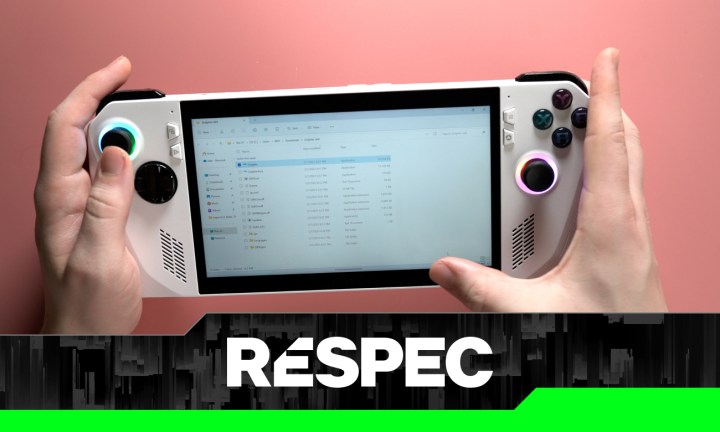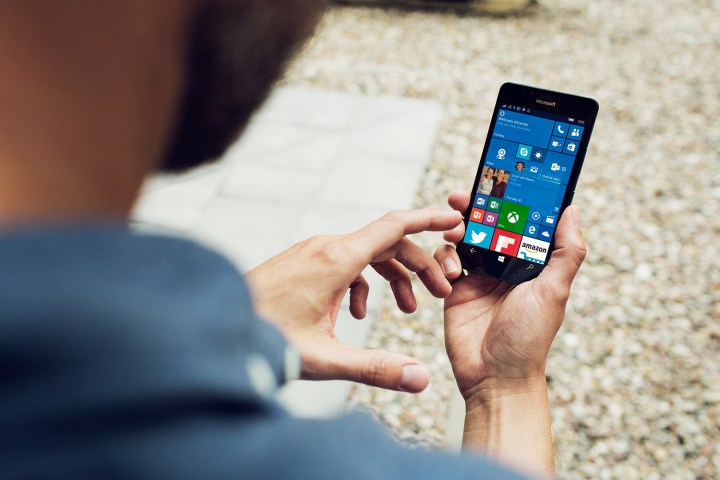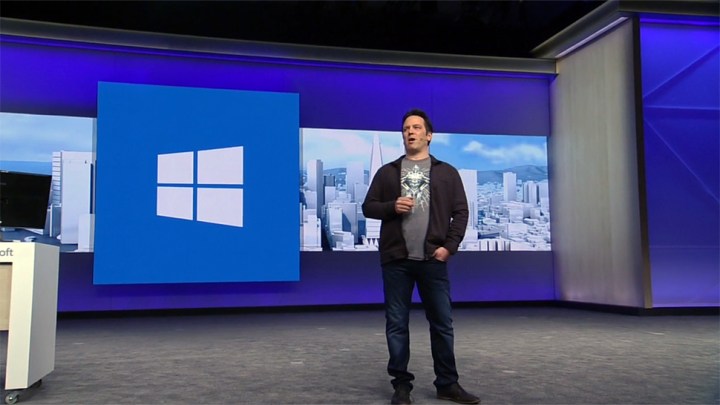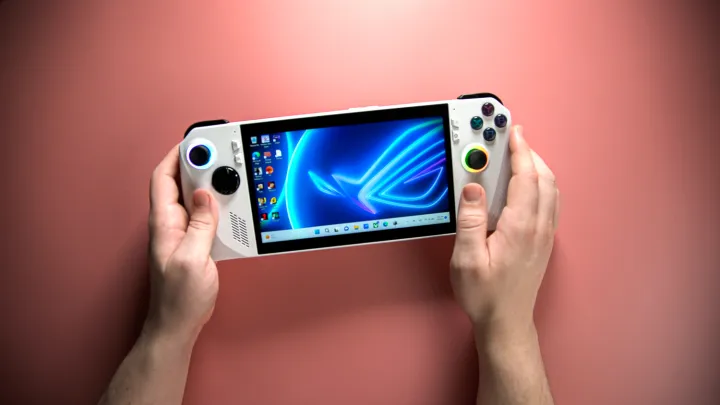
I’ve used most of the handheld gaming PCs that have released this year, but I always go back to my Steam Deck. It’s not the most powerful, it has some quirks, and I still struggle with a frustrating bug that can drain the battery in minutes. But it’s still the best handheld gaming PC you can buy, and that’s due in large part to the fact that it doesn’t run on Windows like other handhelds.
It’s not that I don’t like Windows. As a PC hardware nerd, I’m well aware of both the benefits and idiosyncrasies of PC gaming. Things don’t always work the way you expect them to, and that’s just part of the process to get the best gaming experience possible. When it comes to this evolving form factor of handheld gaming PCs, however, those issues are amplified and pushed to their breaking point.
We’ve been here before

When it comes down to it, the problem with Windows-based handhelds is simple: you can’t take a desktop operating system and force it onto a handheld. For as flexible as Windows is, it presents a slew of issues for handheld PCs. Overlays conflict with each other, any management options are restricted to a tiny touchscreen, and modern comforts like suspending a game aren’t even a thought. We need a dedicated version of Windows for these types of handhelds, but Microsoft doesn’t have a great track record on that front.
Microsoft has tried to make a “lite” version of Windows for decades. That’s not an exaggeration. Attempts at a mobile version of Windows date back to 2000 with Pocket PC, and since then, we have seen various forms of Windows for tablets and mobile. For the most part, these versions only saw a couple of releases on a few niche devices before dying out entirely.
The latest example of Microsoft’s attempts is the ill-fated Windows 10X. This lightweight version of Windows 10 was supposed to launch for dual-screen tablets, but it was canceled in 2021. Some features worked their way into Windows 10, and we can see remnants of the update in Windows 11’s enhanced tablet mode on devices like the Surface Laptop Studio 2.
Even with glimmers of a stripped-down version of Windows, we haven’t seen Microsoft do it successfully durin g its decades of attempts. I have no doubt that Microsoft will continue to iterate, and we might one day get the lite version of Windows that Microsoft has promised for years. Still, we’re long past the point of waiting for that to happen, and it’s time to move on.

There is one area where Microsoft has successfully adapted Windows to another form factor, though, and that’s Xbox. Microsoft originally based its Xbox System Software on Windows 8 with the release of the Xbox One before moving on to Windows 10 Core a few years later. This core operating system was the basis for several other versions of Windows, including versions for HoloLens and the Surface Hub.
This alone shows that Microsoft can make an adaptable OS that can fit into several form factors. For handheld gaming PCs, though, we just don’t have a specific version. Instead, devices like the Asus ROG Ally, Lenovo Legion Go, and Ayaneo 2S are pushing ahead with a desktop version of Windows 11 that doesn’t fit the purpose of these devices — and that’s where the problems stem from.
But wait, there’s more

If Microsoft can make a stripped-down version of Windows for handheld gaming PCs, why don’t we have it? Microsoft certainly tried to bring Windows to every device with its initial Xbox push, but it seems that effort has all but died after a string of hardware failures.
Windows Core was built around Universal Windows Platform (UWP) apps. This format allowed developers to ship apps to all versions of Windows, including those running on Xbox, with a single file. It was the building block for something great: an ecosystem of Windows that works across devices with the same apps. Microsoft has slowly dismantled this ecosystem over the past several years, though.
Windows Phone died out, the ambitious HoloLens project shifted to a sole enterprise focus, and UWP apps on PC slowly faded away due to Microsoft shutting down its ad platform for UWP. Now, we’re in a spot where Microsoft still supports some UWP apps, but the much larger pool of games available on Windows are traditional Win32 apps.
The original idea behind a core version of Windows would have allowed Microsoft to quickly adapt a new version to fulfill the needs of the growing market for handheld gaming PCs. With the mishmash of features and support we have now, though, it’s no wonder that most devices opt for the full desktop version of Windows 11 instead. At the very least, you can ensure that most games will run on the device without issues. It’s a laptop, just with a controller instead of a keyboard and trackpad.
That difference couldn’t be more important. Windows 11 works on handhelds like the ROG Ally, and that’s a feat alone. But there’s one device that truly understands the importance of software for this emerging form factor: the Steam Deck.
There’s an answer

There’s another platform that’s highly modular and adaptable to different form factors: Linux. From smart devices to full desktops to Android, the basis of so many different devices is Linux. That flexibility makes it a perfect partner for handheld gaming PCs.
That’s likely why Valve chose to use its own SteamOS instead of Windows on the Steam Deck. This isn’t an entirely new operating system developed by Valve; SteamOS 3 is based on Arch Linux, which is a popular distribution of Linux. It also bundles Valve’s Proton compatibility layer to get Windows apps running on Linux. This, too, is based on the existing Wine application for Linux.
Valve didn’t get SteamOS right immediately. Original versions were limited in features and showed worse performance compared to native Windows apps. Now, however, SteamOS 3 can not only match Windows in the vast majority of games, but it can even exceed Windows in some cases. We’ve seen that with the Steam Deck and ROG Ally, where the ROG Ally’s performance doesn’t scale in the way its hardware advantage would suggest.

There are limitations of Valve’s approach, with third-party storefronts not always working and games with anti-cheat software refusing to run. However, there’s enough support. Unlike Microsoft’s approach with the Windows Core, Valve has a robust ecosystem of software and features already built into Steam. Those came before SteamOS 3, not the other way around.
There are some clear advantages to Valve’s approach, too. For starters, you’re able to properly suspend the system while playing a game. That’s huge for handheld gaming, and it’s an aspect of devices like the ROG Ally and Ayaneo 2S that’s almost universally glossed over. In addition, you have a single home base for the software. On Windows-based devices, you have a string of utilities and overlays that can conflict with each other, with each fighting for a top slot on the screen.
Even after spending an hour with a device like the ROG Ally, the advantage of a purpose-built handheld operating system becomes clear. That’s why the Steam Deck has so much staying power, and how it remains such a popular device even when faster devices — like the ROG Ally — are available for a reasonable price.
Master of none

The amount of software available for Windows in unmatched, which is the biggest strength of the operating system and also its biggest weakness. Microsoft needs to cater to the many different ways people use Windows, which means devices dedicated to a particular type of users (i.e., gamers) often don’t get all of the attention they deserve.
I’m still hopeful we’ll see a stripped-back version of Windows 11 in the future that can make devices like the ROG Ally stand above the Steam Deck. I’d happily jump ship. For now, though, developers need a way to cater to a specific type of user, and that way is Linux, not Windows.
Editors’ Recommendations
Credit: Source link


Comments are closed.